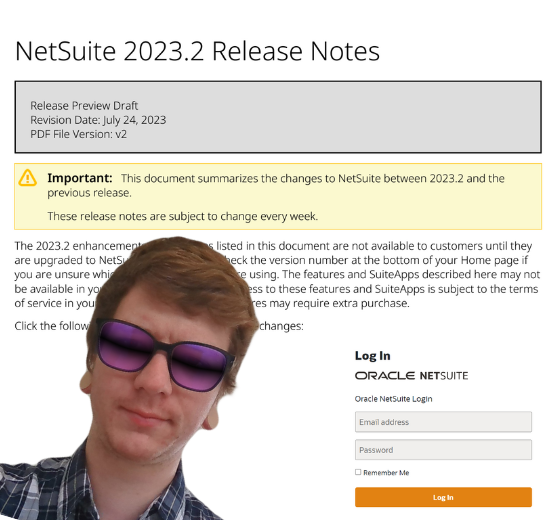Communicating with clients, customers or donors – as well as prospects – is an essential and commonplace activity, but how this is done, on which channel or channels and when requires a considered strategic approach. Customer Relationship Management (CRM) systems are a best practice way of embedding intelligence into the process, ensuring sales and service teams are working from the same page and that data from across the organisation is being used to accurately forecast, report and improve communications.
However, just because you utilise a CRM system it doesn’t mean it’s working efficiently: often older CRM solutions leave gaping holes in procedures. Should the system you use have an end-of-life date – like Microsoft Dynamics CRM 2011, which becomes unsupported in July 2021 – it’s a huge red flag that suggests you should be investigating migration to another product.
But that’s not the only sign your solution has become outdated. Here, we look at 5 signs that your not-for-profit organisation or business may be relying on a system that’s not doing you any favours.
Lacking modern functionality
There’s never been a time of total change in the business landscape that matches the transformation that has occurred in recent years, due to technological advancements and the acceleration caused by the pandemic. Functionality such as integration of legacy customer databases, communication platforms (such as social media channels) and other business data, such as accounting and financial information, should be a standard feature of any CRM system. With social media being a key outlet for customer opinion and feedback, any modern-day organisation needs to have a CRM solution which integrates this vital outlet, in order to manage reputation, customer satisfaction and expectation.

Similarly, being able to see the bigger picture when dealing with customers on issues such as invoice payment, sales orders and credit history – without switching from one system or screen to another – is not just hugely efficient, but also key in delivering a seamless customer experience, managing relationships and capitalising on conversion opportunities.
When it comes to Microsoft Dynamics CRM 2011, this traditionally on-premise system has real limitations around creation and visibility of insights, which cloud-based Microsoft Dynamics 365 (D365) offers in abundance. The machine learning and Artificial Intelligence (AI) features of D365 generates insights around key areas such as customer relationships and customer service history. A true 360 degree view of the customer is available at-a-glance, which is invaluable for agents within your organisation when it comes to anticipating, dealing with and resolving issues quickly.
It’s too complex to use
Having a CRM solution that is too complex to use (resulting in users struggling to navigate their way around the system) is counter-productive for your organisation. Staff may start utilising their own spreadsheets and processes, meaning the investment is wasted. Not only that, but if users are shunning the system, it makes the task of integrating business processes for a seamless and holistic view of the company’s key operations completely impossible.
Using a solution such as Microsoft D365 provides access to data support, low and no-code functionality ‘out-of-the-box’, automated system updates and regular improvements. The intuitive system – supported by machine learning and AI – offers user-friendly interfaces, customisable dashboard and workflow functions, and automation of time-consuming routine tasks. When your employees can use a system that saves them time on executing menial tasks, they will embrace it with open arms. Microsoft Dynamics CRM 2011 and a number of other old solutions don’t offer access to such AI features that are available in D365, so if you’re still running a decade old system, you’re missing out and its probably time to start thinking about migration.
The organisation has outgrown it
For many firms, when starting out, an investment in a scalable CRM solution may be cost-prohibitive, or perhaps just seen as unnecessary. Fast forward to when the company is expanding, and owners soon start to understand the limitations of their start-out system and the consequences of that decision. If they try to manually add-on processes that align with their evolution and new goals, these can often be time-consuming if there is no way to properly integrate or automate them. Advanced data input methods, fast workflow creation and dashboards to provide up-to-date or real-time information on key business areas are vital to running an efficient and profitable business, but without the right solution in place, none of this can be achieved.

If key elements of the CRM system are not integrated, then areas such as sales, marketing and customer service are operating in separate siloes. This is bad news for relationship management, as any agent dealing with a customer should be able to see a full customer profile with up-to-date personal information, purchasing history and any data on previous issues. Furthermore, if this information sits in disparate systems, the opportunity to access up-to-date information that can help inform vital business decisions is lost.
As an organisation grows, so does the customer base, employee head count and process requirement. If a scalable solution isn’t implemented to accommodate this, growth will soon be restricted. With a solution such as cloud-based Microsoft D365 which is deployed online, the infrastructure is maintained by Microsoft and lives on its servers, is regularly and automatically updated with new features to meet industry demands and in line with evolving technology. Plus, it offers world-class security. In a world where future-proofing seems like an impossible task with the rapid rate of evolution, users can be assured that they will always have access to the latest technology with no maintenance costs. The system cannot be outgrown.
Cloud accessibility
Accessing systems, documents, important business data and communicating with colleagues on-the-go were already important and often vital aspects of modern business life. However, as we have moved to a pandemic-induced remote working scenario that is likely to remain a permanent fixture, this has forced many business and organisations to either upgrade their infrastructure to accommodate this, or implement completely new systems to cope with the ongoing requirement to facilitate this new normal.

The modern functionality afforded by cloud-based solutions is unrivalled and the business benefits that can be gleaned are not possible with any on-premise system. The server requirements, IT maintenance and security, and data support are all the burden of the firm in an on-premise system. This can be costly, and certainly restrictive when it comes to features, functionality and real-time visibility that any organisation will benefit from having.
Add to that the wide range of mobile apps and integrated web portals that are available in Microsoft D365, that facilitate seamless employee and customer experiences – all underpinned by AI – and it’s clear to see that regardless of the remote working trend, the benefits of a cloud-based system are infinite to any organisation and key to growth.
Poor or no support
A glitch in the system, a problem when performing updates or a breach to security can bring an organisation relying on software systems to a grinding halt. When solving these issues is the responsibility of the organisation, in cases of using an on-premise CRM solution, then it can be a costly issue to resolve – both in time taken to resolve it, and downtime lost in the process. A delay in access to vital customer records could bring a customer service department to a standstill, while lack of or delay in access to accounting and financial records could be equally damaging to productivity and profits.
Taking into account that users of Microsoft Dynamics CRM 2011 will no longer have access to the extended support after July 2021, then this could be a real issue if problems with the system arise.
Migrating to cloud-based Microsoft D365 would entirely negate these issues. The powerful Microsoft Azure platform hosts the infrastructure, users are always running the latest version, updates are automatic and there is full support available. To be beholden to an on-premise system that could bring the organisation to its knees at any given time is counter-intuitive and damaging for any business.
If you recognise any of the above issues when considering your CRM solution, maybe it’s time to think about an upgrade? If you’re operating on a legacy version of Dynamics, postponing migration could be of real detriment to business progression. Why wait to begin reaping the benefits? If you want to discuss migrating your business to the cloud, want and informal chat about the challenges you face using an out-of-date Microsoft solution or have any other query, why not complete our ‘call back’ form?
Keep reading

What is a NetSuite implementation partner? How do you choose one?

Technology fit for total customer service in 2024

Retail and wholesale distribution: how to improve supply chains

Ditching Sage 1000: what you need to know from businesses that have done it

6 ways AI-ready Microsoft Dynamics 365 helps chartered associations serve members

6 retail and wholesale distribution challenges and how NetSuite solves them

The most exciting features in Microsoft Dynamics 365 2023 Release Wave 2

How to manage a new NetSuite Release: one expert's update process

What’s in NetSuite Release 2023.2?

